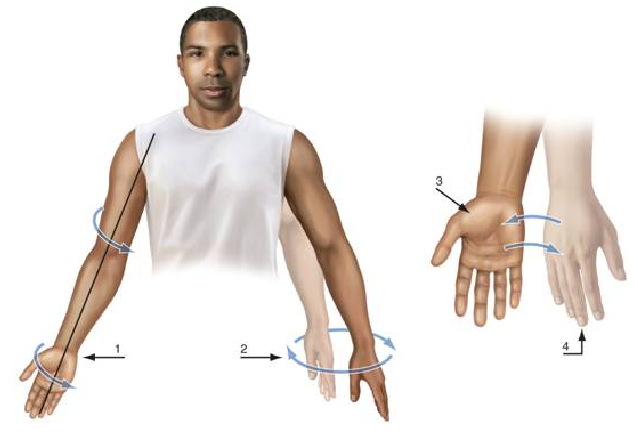Topographical occlusal radiographs of the mandible may be taken with the head positioned the same as for maxillary topographical occlusal radiographs
Indicate whether the statement is true or false
TRUE
Explanation: For both maxillary and mandibular topographical occlusal radiographs, the occlusal plane should be parallel to the floor and the midsagittal plane perpendicular to the floor.
You might also like to view...
A patient with epiglottitis would typically exhibit:
a. inspiratory stridor, pain on swallowing, high fever, and drooling. b. expiratory wheezing, coughing, rales, and cyanosis. c. inspiratory stridor, "seal-bark" cough, low-grade fever, and orthopnea. d. expiratory wheezing, rales, coughing, high fever.
Numbers 1 and 2 demonstrate ____.

A. supination and pronation
B. elevation and pronation
C. rotation and circumduction
D. circumduction and supination
E. rotation and dorsiflexion
After selecting an anesthesia code
A) select a modifier to indicate the patient's status. B) select a modifier to indicate the type of anesthesia. C) select a modifier to indicate where the surgery was performed. D) all of the above.
If a seizure takes place in the dental office, it is very important to take note of ____.
A. the emotional state of the patient prior to the seizure B. the specific anticonvulsant medication(s) that the patient is carrying with them C. the exact symptoms displayed during the seizure D. what took place before the seizure occurred